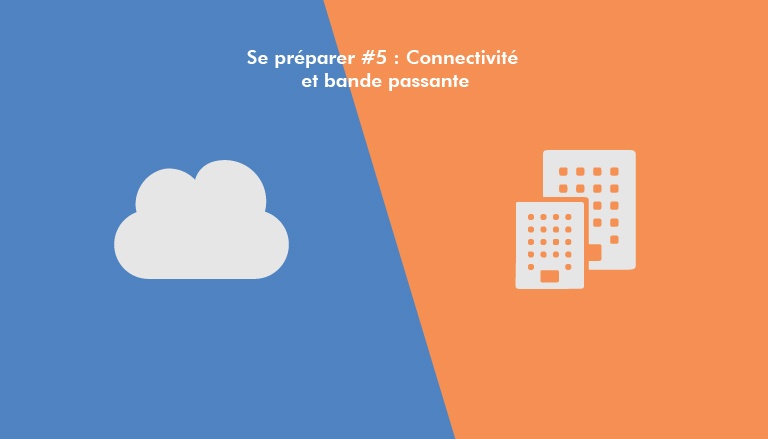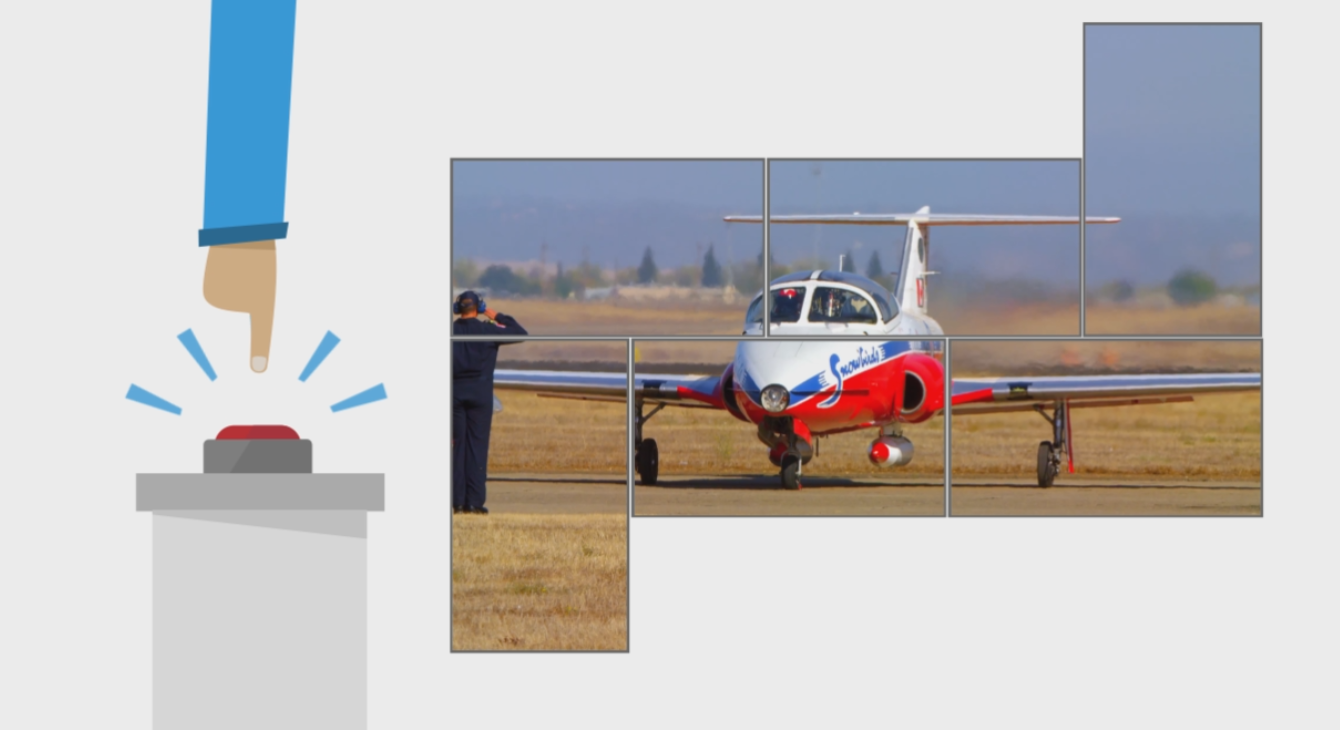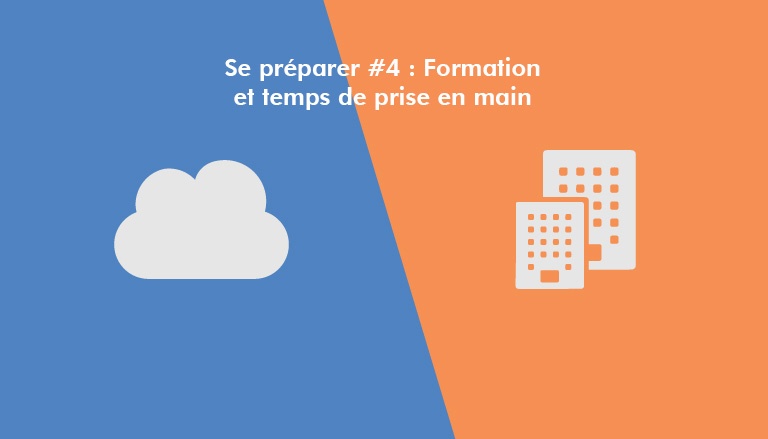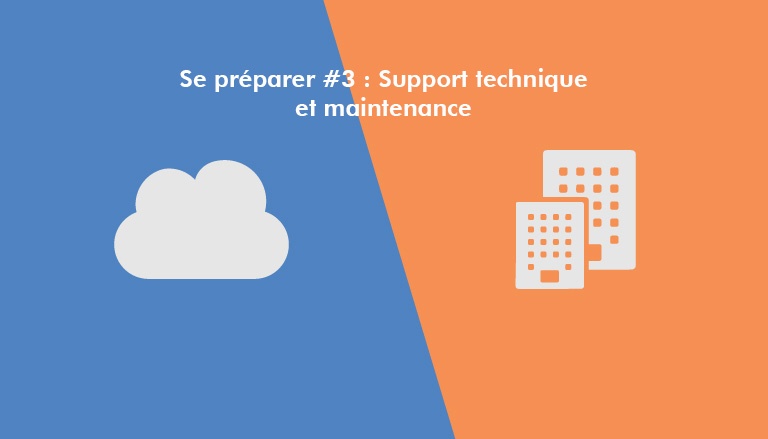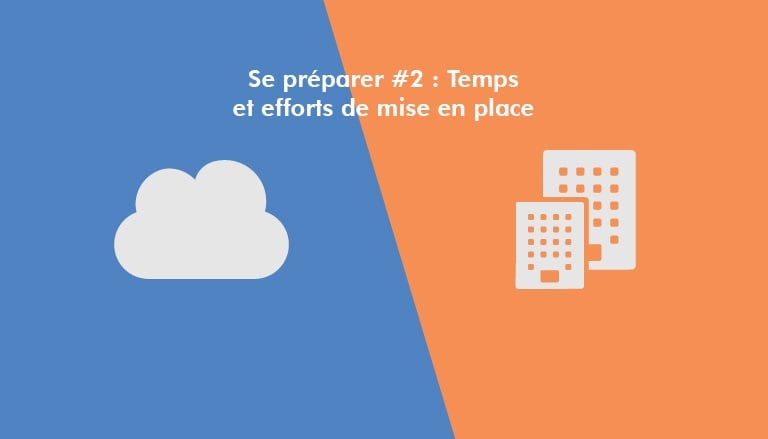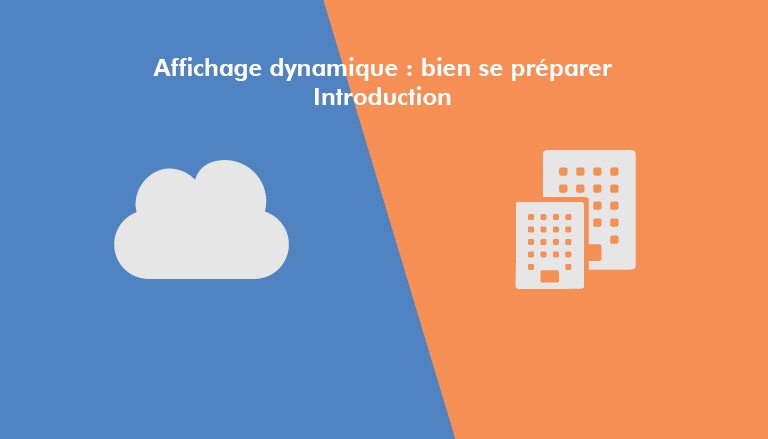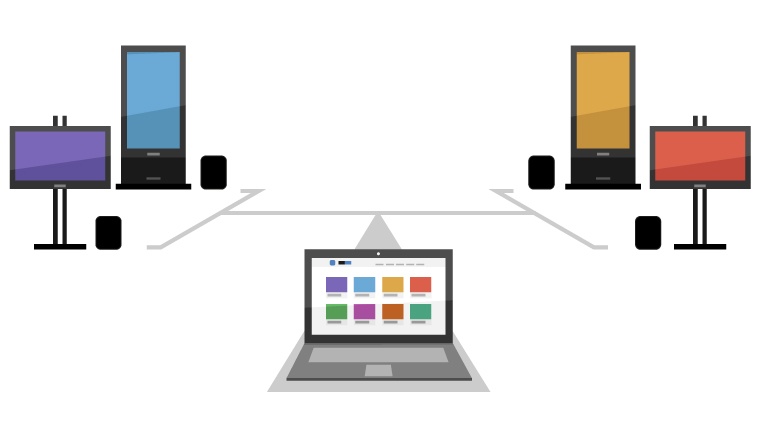This is the fifth article in a series concerning the choice of architecture for your digital signage system, if you’re not entirely clear on the notion of digital signage or the different existing architectures, start by reading this article: Digital signage: preparing yourself well. If you’ve missed the previous article, check out: Preparing yourself #4: Training and time to get started
Digital signage is a communication tool destined to broadcast multimedia content on screens. This tool is based on a system made up of different pieces of equipment (player, server, management software...) that, in order to work, have to be able to communicate between each other. A stable connection is necessary. According to the contents that are to be broadcasted and the frequency of the updates, the quantity of information that is to be exchanged can be significant. Considering the implemented infrastructure, and the means of connection (Ethernet, Wi-Fi, 3G, 4G...), problems of bandwidth, of slow network traffic, or of extra costs may appear.

Case of an on premise hosted model
With this architecture, each broadcasting player has to be connected to the company’s local network. The server also has to be connected to the same network, as well as the marketer’s management station. The exchanges of data are thus limited to this local network. If this network is also used by the company’s staff, it may grow slow. A marketer that would often send long videos, could temporarily saturate the network. Thus, the infrastructure of the internal network limits the bandwidth. The service provider(s) that equip you with a player, server and software can also give you information about data usage in order to make an informed choice. Checking the usage of the bandwidth remains the responsibility of the company’s technical team.
However, the system does not consume data coming from the internet, and thus is not using the internet bandwidth and doesn’t create additional bills, that might come from a telecommunications operator.
Case of the SaaS model
In the case of SaaS architecture, each player has to be connected to the internet. This connection can be done through the company’s local network. (For example, the player connects to the local network of the company and has shared access to the internet, as if it were just another employee). in this case, the bandwidth of the local network as well as that of the internet will be used. It may then become slower, depending on the content sent and on the equipment used. If the company has a sufficient internet subscription, all the players and workstations can work together without any problems of speed appearing or any additional billing.
Connecting each player to the internet can also be done through additional network equipment. This equipment could be a normal internet router, offering a cable connection (Ethernet) or a wireless one (Wi-Fi) or even a mobile connection (3G, 4G...). In this way each player can connect to the internet without having to transit through the company’s local network. This alternative can however generate additional costs, like the purchase or lease of network equipment as well as supplementary internet or data subscriptions. The generated costs often depend on the consumption of data and thus on the equipment and solutions used but also the usage of the platform (the broadcast of streamed videos consumes more data than the broadcast of an image!).
Case of the hybrid model
In the case of a hybrid architecture, certain data exchanges go through the internet, and also consume data. These exchanges are as a general rule less avaricious than with a SaaS architecture, since they only concern a part of the broadcasted content.
A scrutinized consumption
The quantity of data consumed depends on the usage of the marketer. However, in most cases, the media that are to be broadcasted are downloaded on the players only once. The bandwidth is then only used to download new media, before their first broadcast. Furthermore, this makes it possible to never interrupt the broadcast, even in the case of an internet blackout. Moreover, certain solutions offer the re-encoding of content on their server before sending them to the players. This makes it possible to drastically reduce the size of the files to be transmitted on the network and thus to limit the consumption of data (on the internet and the local network). Only the broadcast of streamed content can prove data consuming. They should be used in full knowledge of this fact.
In this way, all the architectures can use the bandwidth of the local network and create slowdowns, depending on their usage by the marketers. Only a SaaS architecture can generate additional costs pertaining to additional internet or mobile data subscriptions, but certain (SaaS) solutions offer optimisations that limit the size and frequency of the data, guaranteeing minimum traffic and reduced bills.
Check out the following article Preparing yourself #6: Security.
You have a digital signage project, ask for a free demo.
